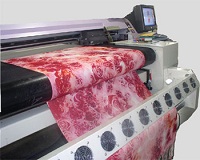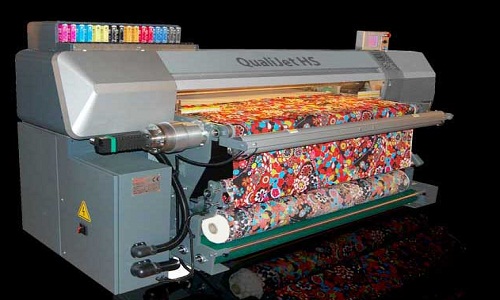"Conventional textile printing is giving way to digital printing inorder to accommodate short runs, fast turnarounds, or new products. The market is supported by a complex and well-established textile supply chain, of which printers are only a very small component. Commercial printers therefore, need to focus on more accessible textile segments similar to applications they already produce, such as textile-based sign and display graphics and direct-to-garment (DTG)."
 Conventional textile printing is giving way to digital printing inorder to accommodate short runs, fast turnarounds, or new products. The market is supported by a complex and well-established textile supply chain, of which printers are only a very small component. Commercial printers therefore, need to focus on more accessible textile segments similar to applications they already produce, such as textile-based sign and display graphics and direct-to-garment (DTG).
Conventional textile printing is giving way to digital printing inorder to accommodate short runs, fast turnarounds, or new products. The market is supported by a complex and well-established textile supply chain, of which printers are only a very small component. Commercial printers therefore, need to focus on more accessible textile segments similar to applications they already produce, such as textile-based sign and display graphics and direct-to-garment (DTG).
Textile signage market to grow
Keypoint Intelligence – InfoTrends’ wide-format consulting service reportsthe market for soft signage is expected to see a compound annual growth rate (CAGR) of 6 per cent between 2017 and 2022, reaching 91.3 million square meters of output by the end of the forecast period. While more than 70 per cent of the market’s output is produced using sublimation, latex and UV printing technologies are increasingly being used to create sign and display applications on textiles. To take advantage of this market opportunity, print service providers must match their offerings to the demand within their existing customer base or their target markets.
Higher profit margins for soft signage applications
The first step is evaluating the vertical markets served to determine which applications are most appropriate and which ones establish the production requirements. For example, universities need banners and backlit signs that do not require complex contour cutting. However, trade events require a mix of small and large format signs that have a range of finishing including silicon edging to contour cutting, along with a wide range of mounting options.
requirements. For example, universities need banners and backlit signs that do not require complex contour cutting. However, trade events require a mix of small and large format signs that have a range of finishing including silicon edging to contour cutting, along with a wide range of mounting options.
Soft signage applications have higher profit margins in relation to most other commercial printing applications. Based on the 2017 estimated street price of $60.2/m from InfoTrends’ Wide Format Application Forecast, PSPs can expect a profit margin in the range of 40 per cent to 60 per cent. These margins are difficult to find in commercial applications.
DTG printing witnesses new developments
InfoTrends says the DTG market will experience a strong CAGR of 13 per cent between 2016 and 2021, reaching a global value of nearly $10 billion. This segment is also witnessing new developments. The use of synthetic fibers (eg, polyester) is growing leading suppliers to seek ways to print directly into these materials. The market recently introduced a new pigment-based technology that enables the printing of white ink, followed by CMYK. Although it will take some time for this new technology to mature, it opens the door for DTG production in cotton, cotton blends, as well as synthetic materials.
Market awareness important for success
Though a promising area of development, digital printing has its share of challenges. There is a bit of a learning curve associated with understanding the different substrates, inks, software, equipment, and finishing requirements. Knowing which markets are addressable based on business current expertise and resources can increase the chances of success. For commercial printers that are hoping to expand into the tempting world of textiles, it is best to start by focusing on applications with similar printing processes that can be sold to existing or adjacent customers.












